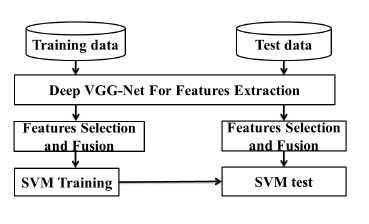- ALL COMPUTER, ELECTRONICS AND MECHANICAL COURSES AVAILABLE…. PROJECT GUIDANCE SINCE 2004. FOR FURTHER DETAILS CALL 9443117328


Projects > ELECTRONICS > 2017 > IEEE > DIGITAL IMAGE PROCESSING
The rapid development of remote sensing technology allows us to get images with high and very high resolution (VHR). VHR imagery scene classification has become an important and challenging problem. In this paper, we introduce a framework for VHR scene understanding. First, the pretrained visual geometry group network (VGG-Net) model is proposed as deep feature extractors to extract informative features from the original VHR images. Second, we select the fully connected layers constructed by VGG-Net in which each layer is regarded as separated feature descriptors. And then we combine between them to construct final representation of the VHR image scenes. Third, discriminant correlation analysis (DCA) is adopted as feature fusion strategy to further refine the original features extracting from VGG-Net, which allows a more efficient fusion approach with small cost than the traditional feature fusion strategies.
Bag of Visual Words (Bovw), Principal Component Analysis (PCA), Scale Invariant Feature Transform (SIFT), Sparse Coding (SC).
In this paper, a new approach for VHR images scene classification is presented. The proposed method is based on VGG-Net model as a feature extractor. Feature fusion strategies are introduced to combine among features extracted from the images using VGG-Net. The traditional fusion methods based on addition and concatenation are used. We proposed to combine between the outputs of CNN algorithm, where the final features can effectively represent the scene images. In order to reduce dimension of features and use an adequate method for feature fusion, we propose to use the discriminant correlation analysis (DCA) in this paper.
BLOCK DIAGRAM
